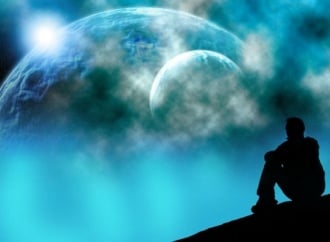- Chemistry in Britain 31 (12), 942 (1995) -
Statues of the Virgin Mary have just stopped weeping in Italy and now other prodigious icons are making headlines. In India and all over the world, statues of Hindi Gods are said to drink the milk offered to them by worshippers.
As Sherlock Holmes would say, it is a capital mistake to theorise before having all the evidence. Nevertheless, if such new "miracles" were to be investigated by a chemist, I would suggest considering the following possible explanations for them (after taking into account media exaggerations of the facts, self-delusions of the believers, etc.):
1) Statues made of porous materials as plaster or papier maché can certainly absorb some liquid from an unpainted area.
2) If the statue is hollow and small holes are detected, they might be diagnostic for a siphoning effect, triggered by capillary attraction. To show this as a classroom demonstration, the tip of a thin Pasteur pipette can be bent on a Bunsen burner at an angle of a bit more than 90º. The pipette, fixed on a small flask by mean of a pierced cork, will suck up by capillary action and greedily siphon off any liquid that comes in contact with the tip that points slightly downwards.
3) I witnessed a rather unusual effect on this line, with a small solid metal statue of the elephant-headed God Gamesh. When the bent trunk of the statue was plunged into a teaspoon of milk, the liquid, wetting the trunk and trickling down along the statue's body, triggered the siphoning process. The effect was that the statue was sucking up the milk - at least if one does not notice the liquid collecting on the table under the statuette...
(I was able to replicate the phenomenon on a home-made plastiline statue.)
A careful checking of the weights of the statue and of the liquid before and after the miracle should also help in getting at the truth.
I suggest that if these lines of investigation are to be followed, the laws of mass conservation will probably turn out to be still valid.
Luigi Garlaschelli, researcher
Dept. Organic Chemistry
University of Pavia
Via Taramelli,10
27100 Pavia, Italy.


